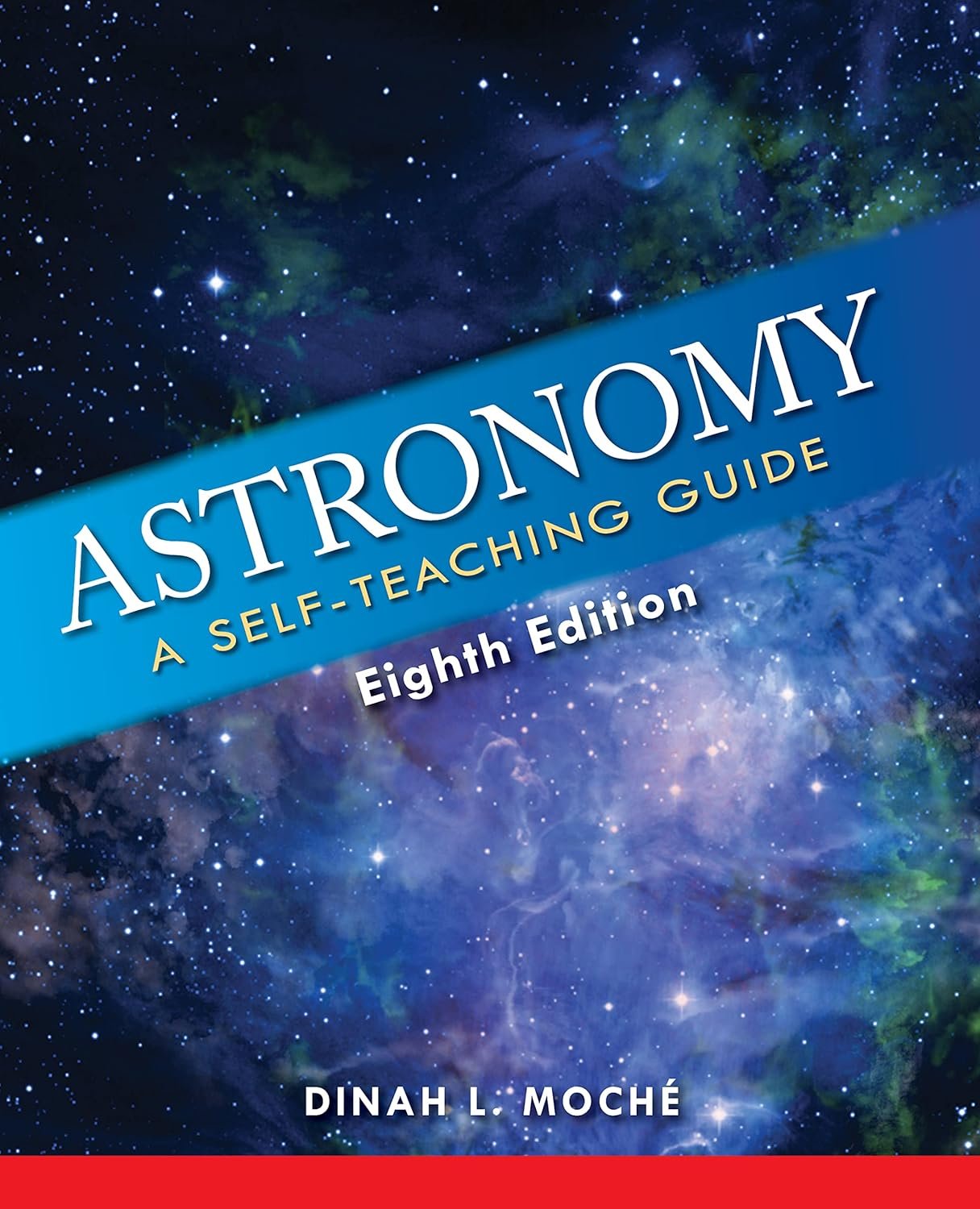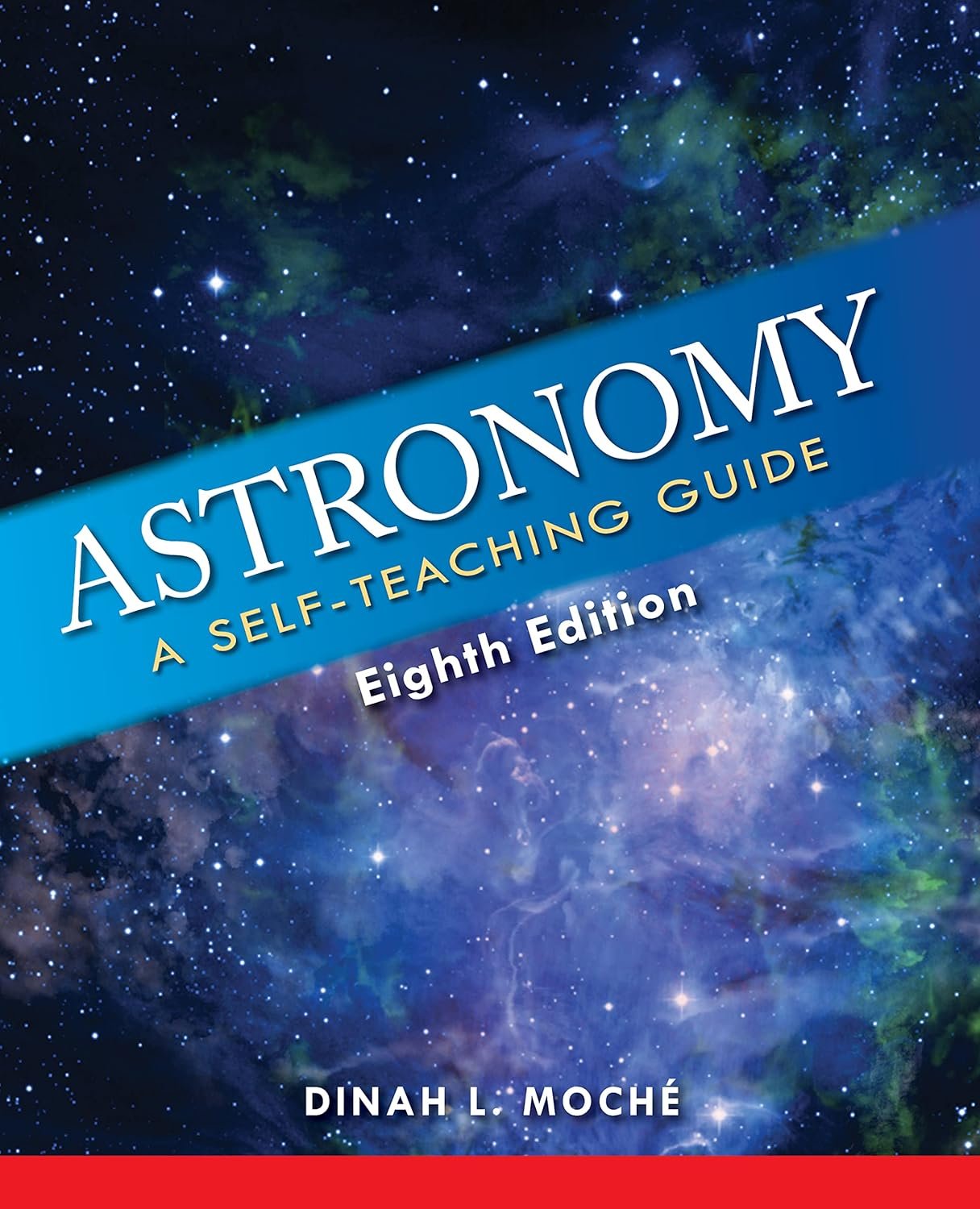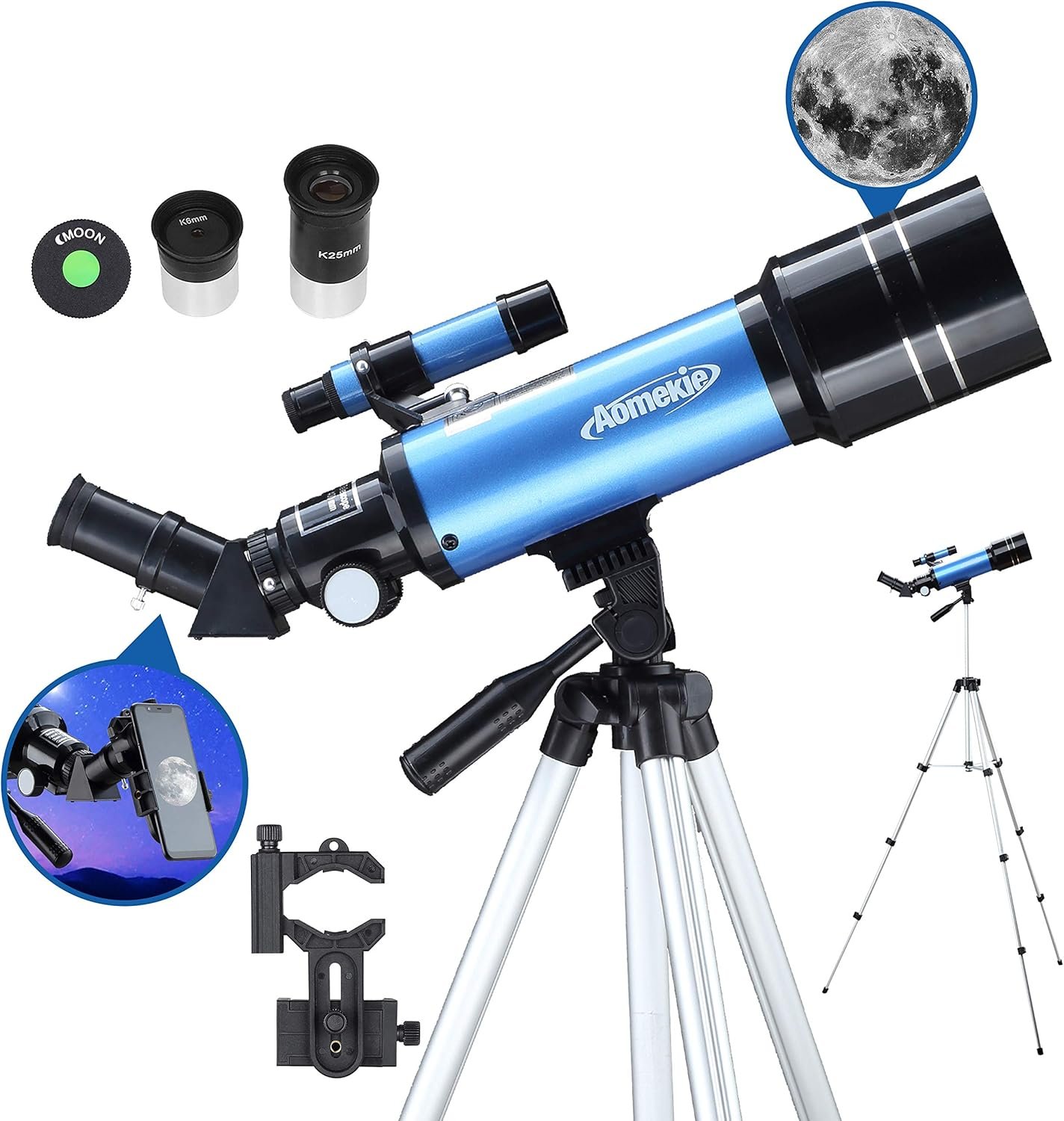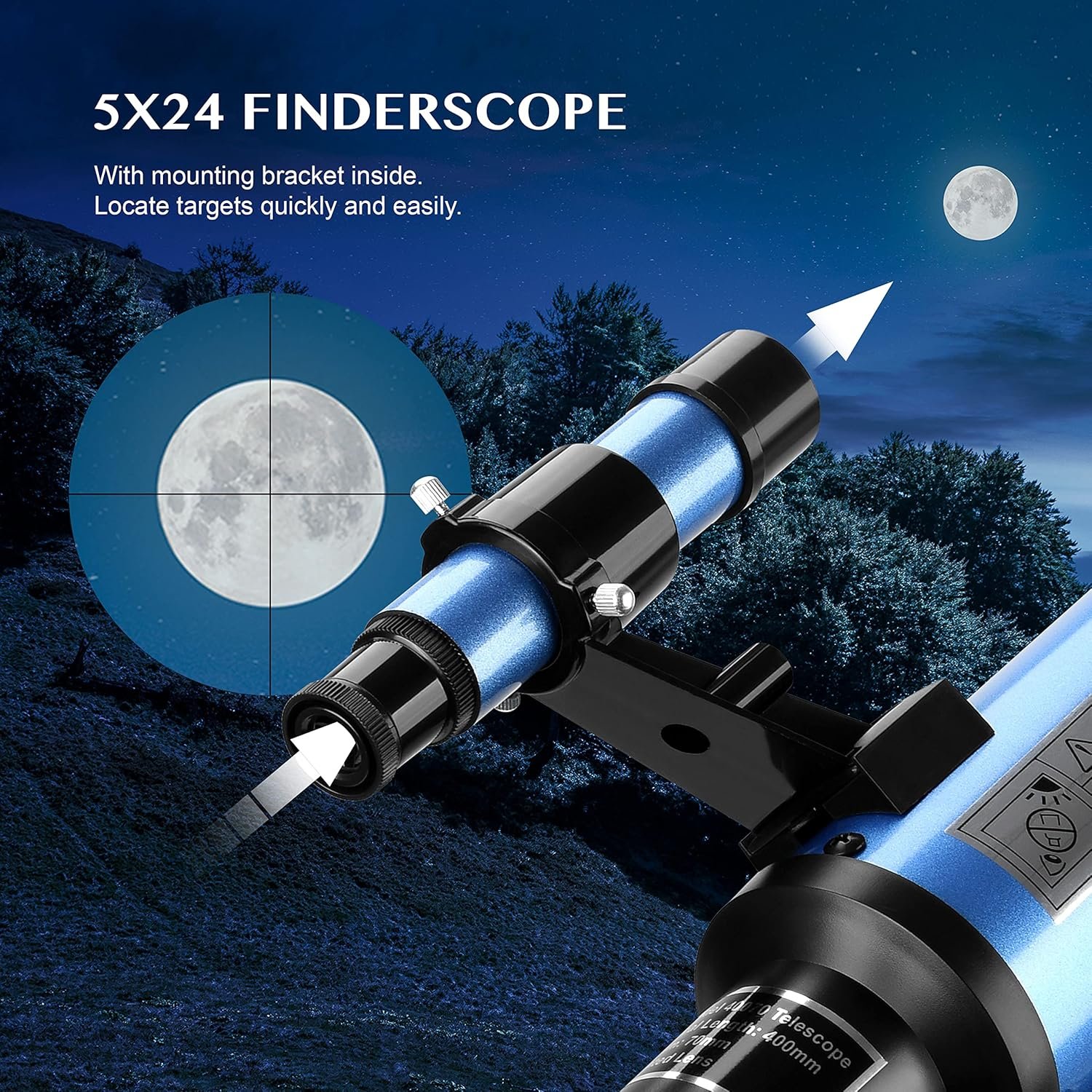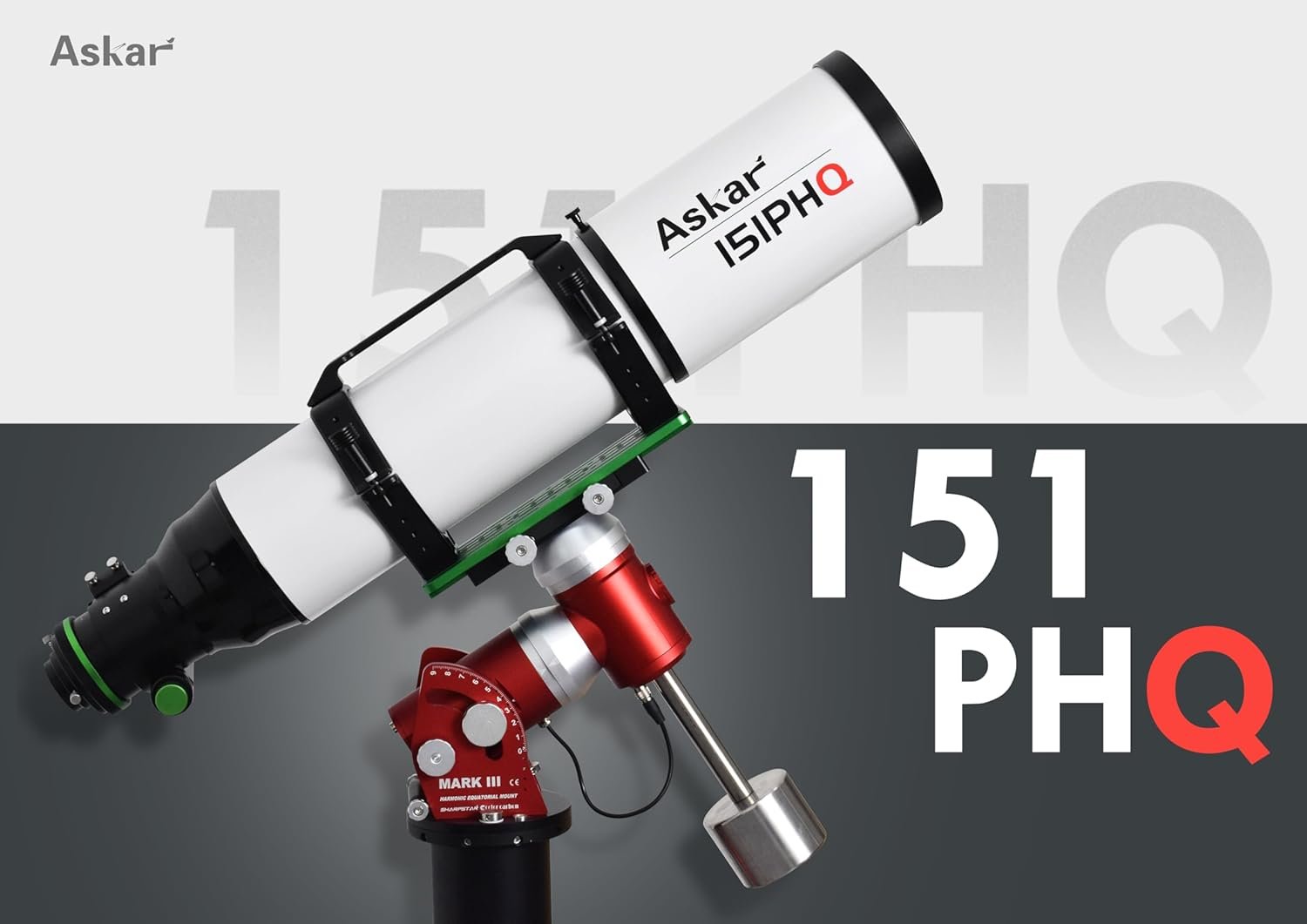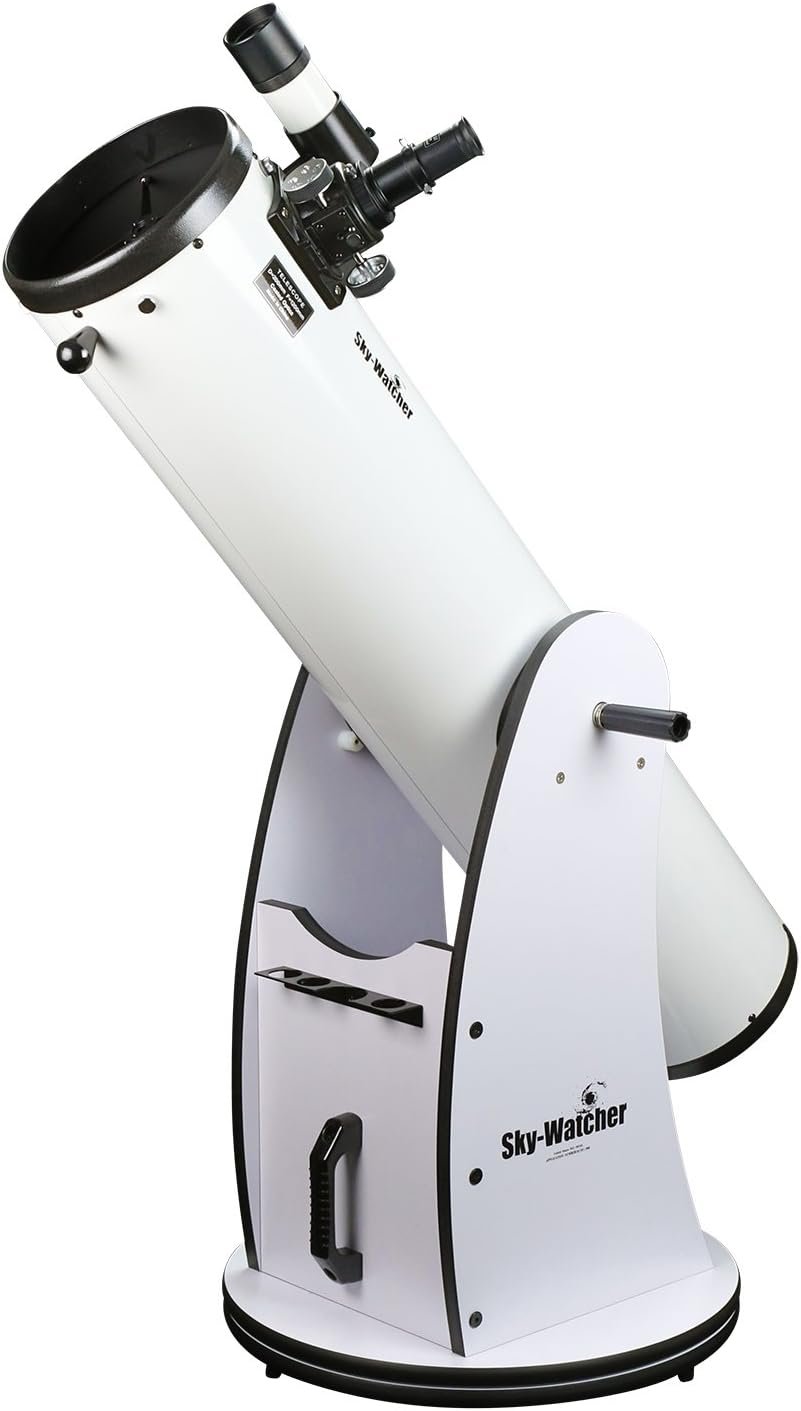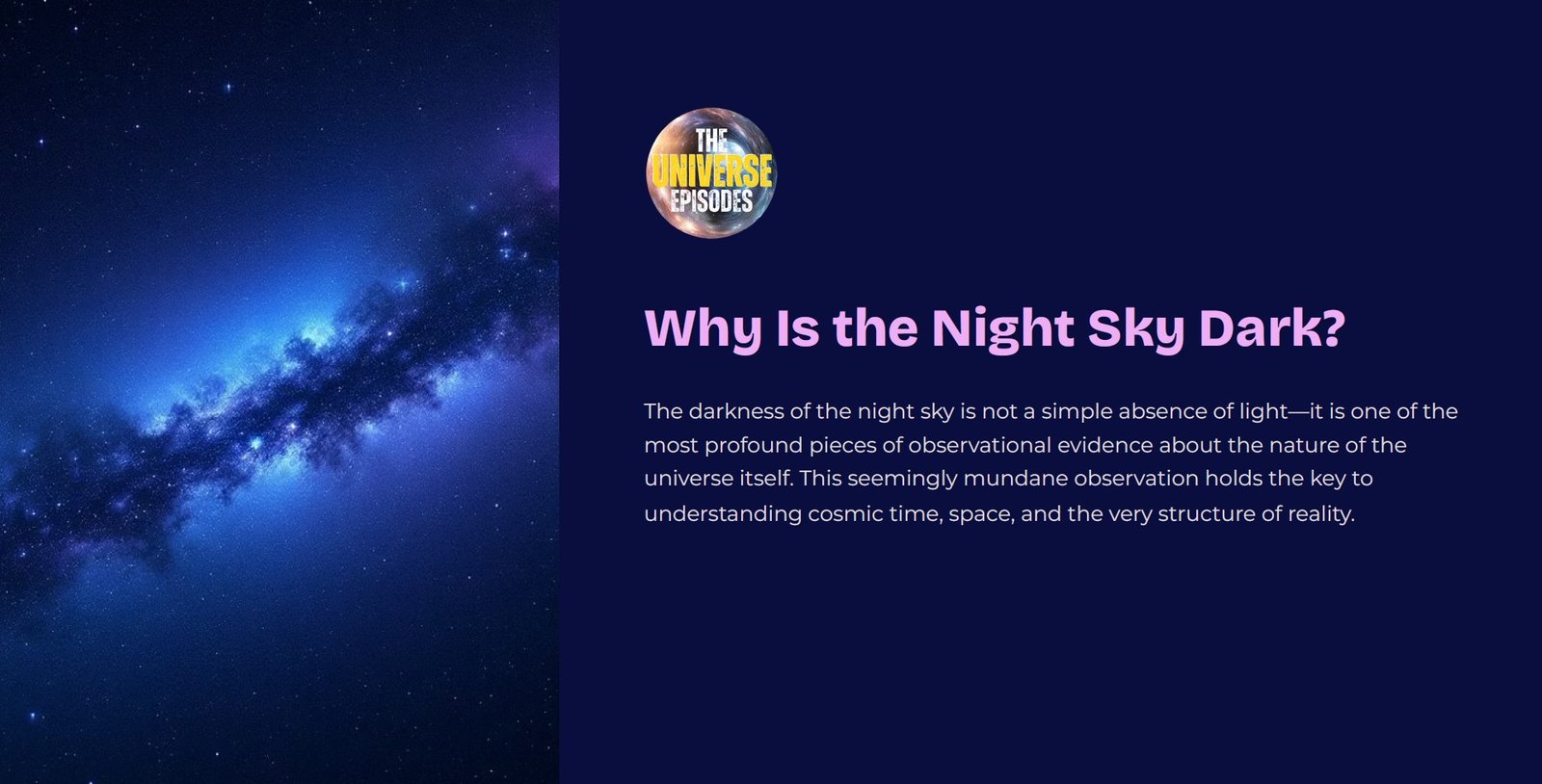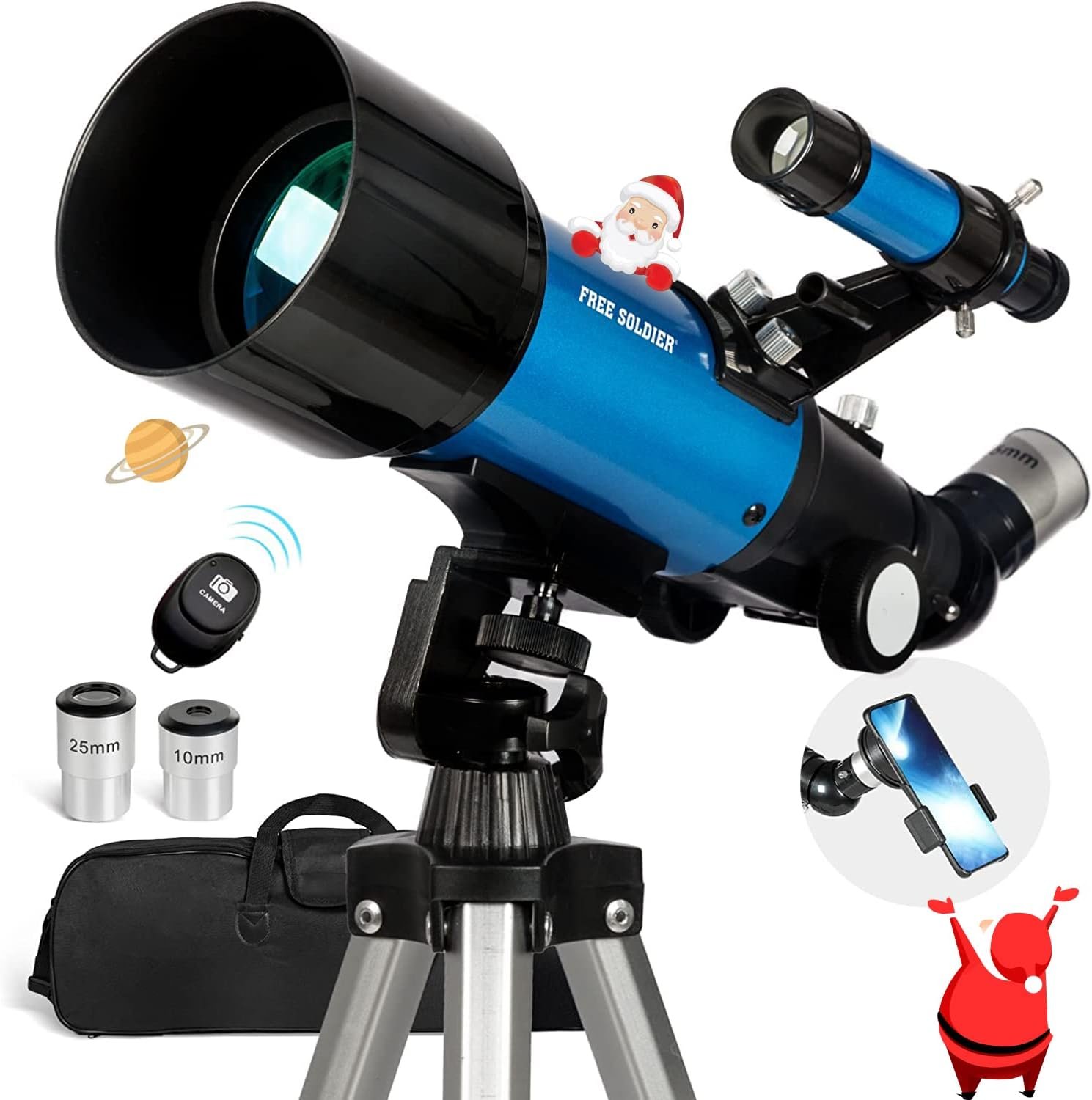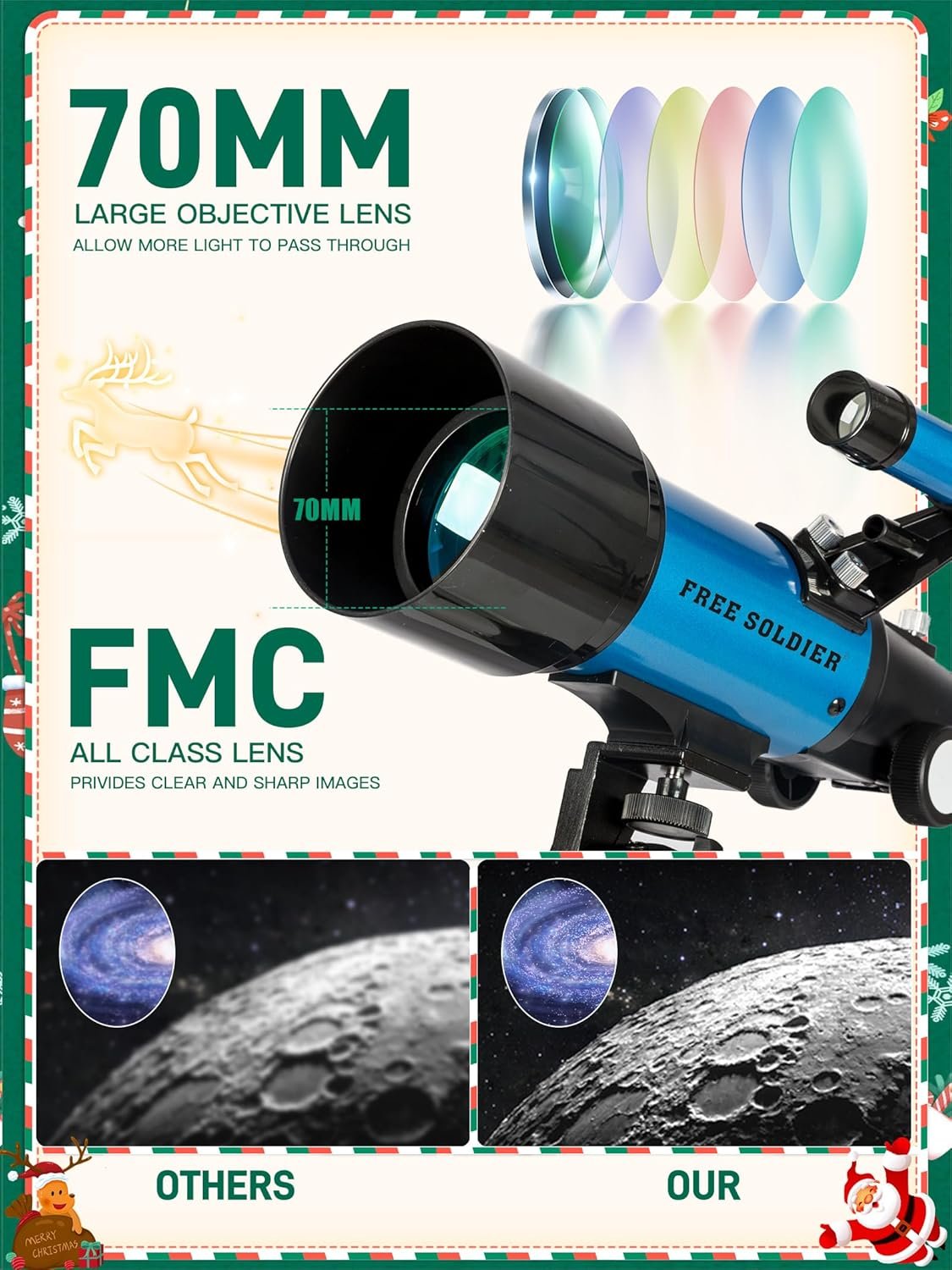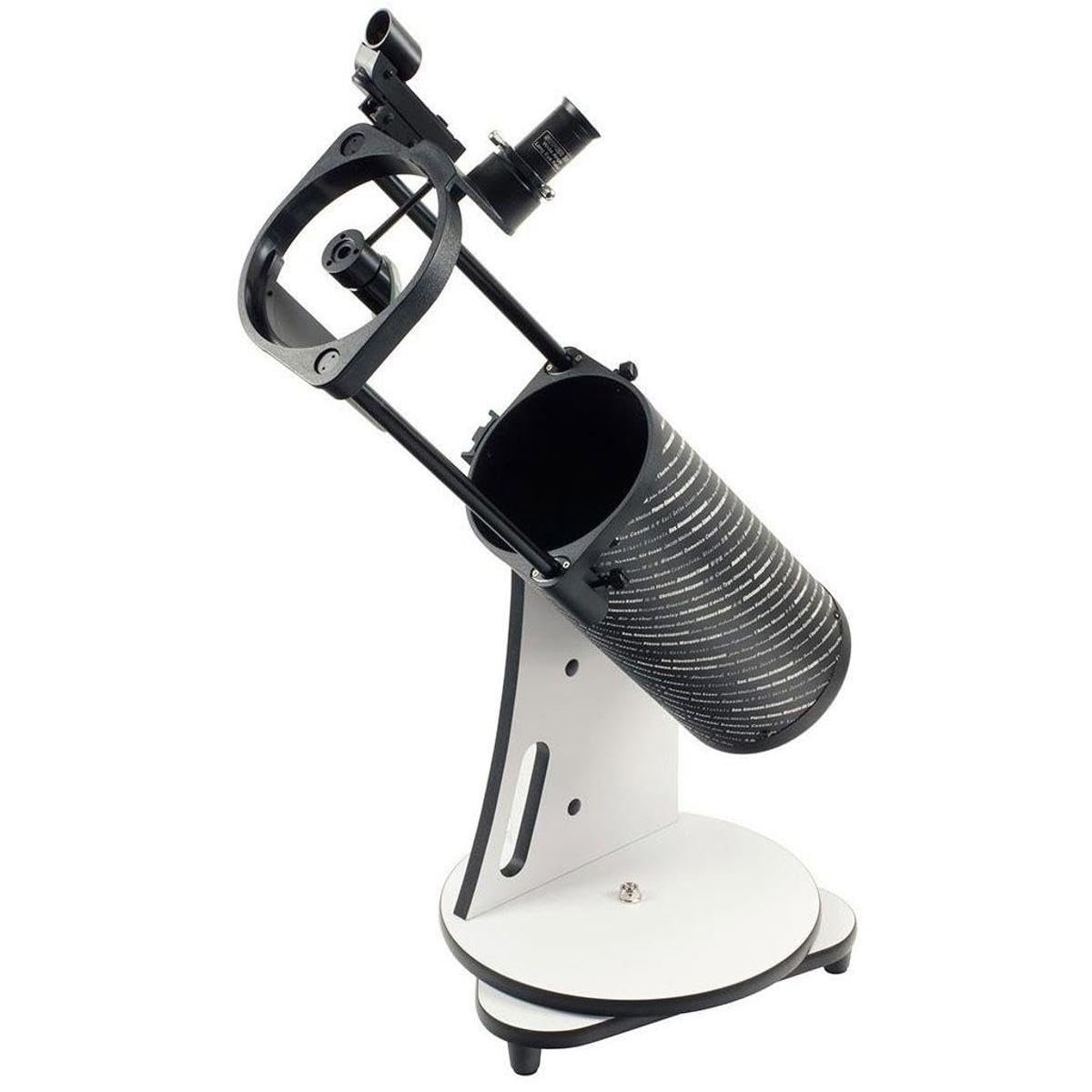The Stellar Companion You’ve Been Looking For
So, you’ve decided to learn more about the universe. Brava! What could be more enriching than spending your leisure time contemplating the vastness of space? Enter "Astronomy: A Self-Teaching Guide, Eighth Edition." This isn’t just any outdated, dusty tome that you found stashed in your high school’s library. Oh no, this is the eighth edition—meaning the creators have been iterating and improving like a diligent astronomer tweaking their telescope.
What’s New in the Eighth Edition?
Why should you care that this is the eighth edition? For starters, each revision of "Astronomy: A Self-Teaching Guide" has added more layers of wonder and clarity to what was already an exceptionally engaging read. This edition is packed to the brim with updated data, fresher images, and the latest findings in the field of astronomy. You now have a highly polished, user-friendly guide to stargazing and everything space-related.
A Style You Can Actually Understand
Science books often get a bad rap for being too technical, too dry, or too snooze-inducing. But this guide? Imagine learning astrophysics from your witty, eccentric uncle who knows his way around a telescope. It's passionately educational yet undeniably approachable. You'll feel like a witty conversation partner and not like you're mentally clawing through molasses.
Taking It at Your Own Pace
Self-teaching can sometimes feel like nibbling around the edges of a vast cheesecake—you’re not really sure where to start, and it's easy to get overwhelmed. The guide breaks things down into digestible chunks, making it simple to absorb complex concepts. Each chapter can be approached individually, akin to tackling a personal quest or a science-themed Choose Your Own Adventure.
Interactive Learning
Let’s face it, the term “interactive learning” often implies there’s going to be a lot of unnecessary, juvenile nonsense. Not in this guide. Here, it means quizzes you’ll actually want to take and exercises that make it hard to believe you're learning anything productive at all. Stargazing assignments, star map readings, and backyard telescope recommendations help cement your growing mastery over the cosmos.
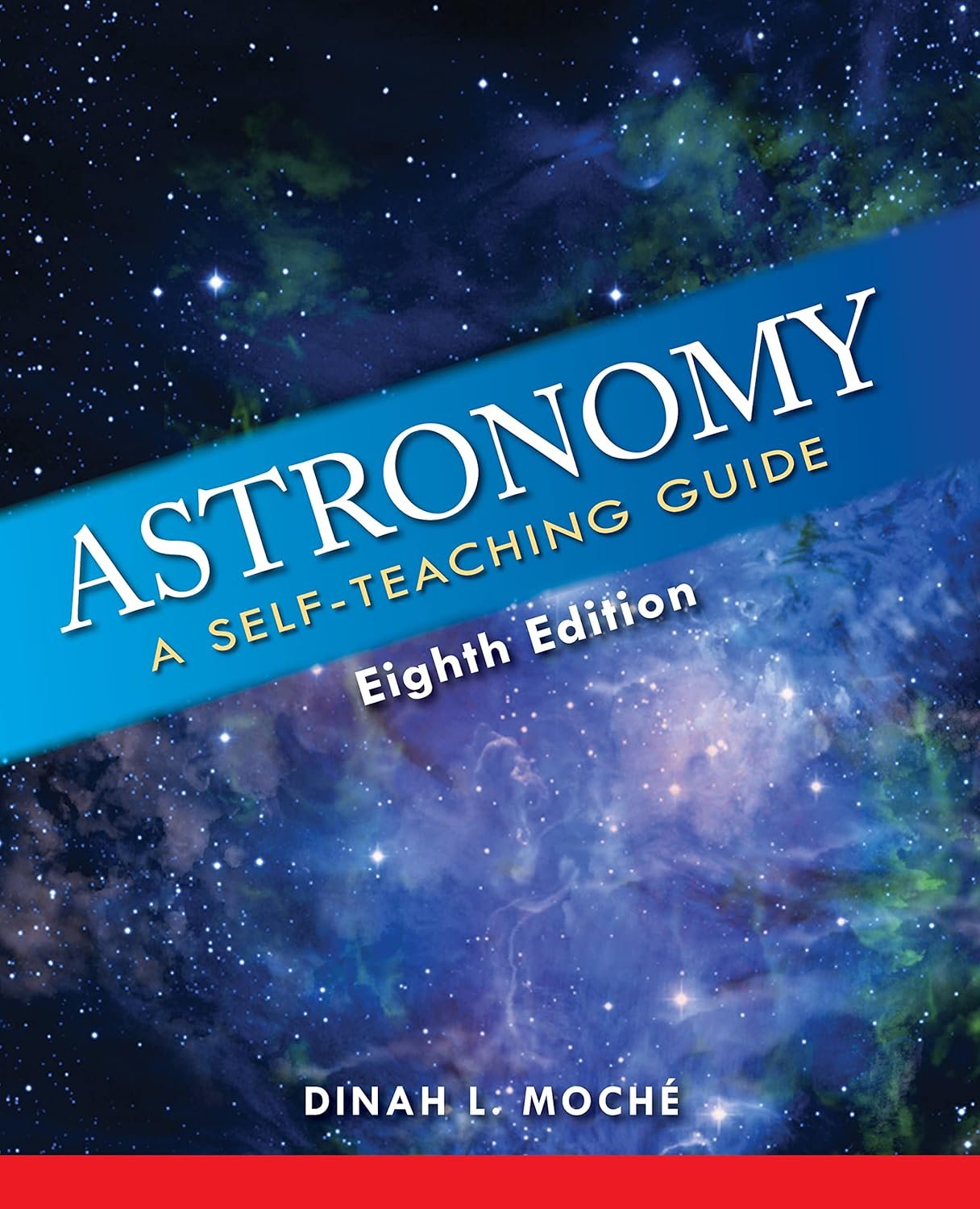
More Than Just Stars and Planets
Sure, stars and planets are fascinating, but the universe has much more on its plate, and so does this guide.
Black Holes to Astrobiology
From black holes with their voracious appetites to the dizzying possibilities of astrobiology, this guide covers every celestial topic you can imagine—and probably several you’ve never even considered.
The Evolution of the Universe
Ever wonder how we all got here? "Astronomy: A Self-Teaching Guide" offers a step-by-step walkthrough of the universe's history—no DeLorean required. You'll ascend through the epochs and eons, watching the cosmic ballet unfold as vividly as a movie in your mind.
Tools of the Trade
All dressed up with no telescope to gaze through? This book has sections dedicated to the tools and instruments you will want to get familiar with. It explains how to actually use that sophisticated new telescope you've invested in (or will soon), and offers tips on choosing the best star charts and software.
Your Stargazing Companion
Now, I know there are countless apps out there claiming they can turn anyone into an amateur astronomer, but let's be real—for any deeply satisfying comprehension, nothing beats a well-crafted guidebook. Here's why:
Portability and Durability
Unlike those apps that conk out just when you’re on the cusp of identifying Alpha Centauri, this book isn't reliant on Wi-Fi or battery life. You can take it to a remote area with zero light pollution and still have all the crucial information at your fingertips. And, you won't have to fumble with a tablet in the middle of a chilly night.
Comprehensive Content
With "Astronomy: A Self-Teaching Guide, Eighth Edition," you’re not just glossing over basics. You get comprehensive coverage, detailed explanations, and the kind of nuanced takes that make professional astronomers shed a tear of appreciation. We're talking charts, diagrams, and meticulously selected photographs that make the learning experience truly holistic.
Feed Your Curiosity
Curiosity may have killed the cat, but it’s sure as heck going to make you a better astronomer. "Astronomy: A Self-Teaching Guide" feeds that insatiable thirst for cosmic knowledge. Have you been curious about the mysteries of dark matter? Or the enigma of pulsars? The answers lie within these pages.
Who Is This Book For?
Alright, so you’re skeptical. You might be thinking, “This all sounds well and good, but is this guide really for me?” The short answer: yes.
Beginners to Enthusiasts
For those just setting foot into the magnificent garden of astronomy, "Astronomy: A Self-Teaching Guide" is like the grandmotherly figure holding your hand. It patiently takes you from the basic shapes and phases of the moon to the complex movements of distant galaxies. On the other hand, if you’ve already got your telescope set up and are familiar with basic constellations, this guide provides ample opportunities to deepen your understanding.
The Special Interest Crowd
Are you a teacher looking for a thrilling way to introduce your students to the wonders of the universe? This book makes a stellar (pun intended) classroom companion. Or maybe you’re a hobbyist who’s looking to inject more scientific rigor into your backyard stargazing sessions? Either way, this book has you covered.
Breaking Down the Night Sky
Let's get into the nitty-gritty. Here's a peek into what you'll find inside.
Celestial Coordinates
Before you can start naming constellations willy-nilly, you need to understand celestial coordinates. Observing the stars is somewhat like navigating the seas—you need to know your latitude and longitude, just in a more vertical sense.
Recognizing Patterns
Learning to spot patterns in the night sky isn’t as Herculean a task as it might seem. Remember how you used to play dot-to-dot as a kid? It’s somewhat the same, just on a cosmic scale. You'll quickly learn to spot the mythical figures that cultures have built stories around for centuries.
The Planets Are No Longer Just Sirius Business
You’ll find it surprisingly easy to differentiate between a star and a planet after reading this guide. They are treated with the pomp and ceremony they deserve—highlighting their movements, their idiosyncrasies, and their unique features. Jupiter's Great Red Spot will no longer be a mere trivia term; it will be an old friend.
Beyond Just Learning
Could a book change your perspective on life and the universe? Possibly. "Astronomy: A Self-Teaching Guide, Eighth Edition" does more than fill your brain with star stuff. It nourishes your sense of curiosity, reawakens a sense of wonder you forgot you had, and makes you ponder your place in the grand scheme of things.
A Pathway to Further Exploration
One of the most enchanting things about this guide is how it leaves you hungering for more. It acts as a telescope pointing not just to the heavens, but to the vast libraries and future hypotheses where you can continue your learning. There's a list of additional resources, recommended readings, and online communities to keep you engaged long after you've finished the last page.
For the Non-Believers
Let’s be blunt: some people see science as nothing but jargon and minutiae better left to the eggheads. This book, however, delights in the macro and micro, in the profound and the whimsical. If you or someone you know resides in that scientifically averse camp, this guide could very well be the key to opening up an exciting new frontier.
Why You Need This Guide
In an age where fake news and misinformation run rampant, possessing empirical knowledge is like having a finely tuned BS detector. You not only learn the science behind the universe but also how to critically analyze new information. It's like being handed a mental magnifying glass to scrutinize the often muddy waters of modern scientific claims.
A Gift That Keeps on Giving
Still hesitant? Picture this: You hand over this guide to a loved one, perhaps slightly skeptical of its ability to change their life. Fast forward a few months, and they’ve become the family’s go-to space trivia whiz, mesmerizing everyone with tales of supernovae and celestial phenomena at dinner parties. It's not just a book; it's an experience and an invitation to a lifelong adventure.
Timeless Investment
It’s easy to get sucked into the seasonal disposable culture—books that are trendy for a hot minute and then forgotten. This guide is a timeless investment. The universe isn’t going anywhere; the principles and discoveries enclosed will continue to spark intrigue for generations.
For Every Season
Astronomy doesn’t take a holiday. Whether you’re sweating under the summer stars or shivering in the winter chill, the night sky always offers something to ponder. With this guide, each season brings new constellations, celestial events, and opportunities for your expanding curiosity.

Ready to Embark on Your Celestial Journey?
The night sky has been humanity’s companion for millennia, guiding sailors, inspiring poets, and bewildering scientists. "Astronomy: A Self-Teaching Guide, Eighth Edition" has distilled all that ancient wonder and modern science into an enjoyable, interactive, and informative read.
So, anticipate those clear nights with excitement, and let your mind wander light-years away. The vast, unending beauty of the universe awaits. Now, get out there, and who knows? Maybe you’ll discover a comet or even name a new star. The cosmos is full of possibilities, and it’s high time you started exploring.
Why I Picked Up This Book
I had always thought of myself as somewhat of an astronomy buff. In high school, I could prattle on about the basic facts—what a supernova was, how the moon impacts tides, and that the rings of Saturn are really just a bunch of ice and rock. But deep down, I knew I was only skimming the surface. So, one cloudy Saturday morning, while clutching a cup of lukewarm coffee, I decided to level up my amateur stargazer game. That's when I stumbled upon this gem titled "Astronomy: A Self-Teaching Guide, Eighth Edition."
First Impressions Matter
The cover wasn't one of those gaudy, overly cosmic designs that scream "I'm trying too hard." Instead, it was sleek and professional, almost giving off the vibe that it was for someone who was serious about learning. This wasn’t just a fling, I was looking for a committed relationship with the universe. And boy, did this guide deliver.
What's Inside the Treasure Chest?
Now, let me tell you, the book is structured like the syllabus of a really cool astronomy course you wish you could have taken in college but didn’t because you were too busy sleeping through Psych 101. It starts with the basics, the essentials—you know, things like the scale of the universe. What struck me was how it made these massive concepts digestible without sounding like a textbook that’ll put you to sleep faster than counting sheep.
The Building Blocks
The first few chapters focus on the foundational stuff: the solar system, the stars, and the universe. It's like the author knew exactly what I didn’t know but thought I did. It’s almost spooky. You get a chance to clearly grasp why Pluto got the boot from the planet club and exactly how to locate Polaris, the North Star. Trust me, this isn't the dry, wishy-washy "space stuff" you bunked in school. It's as if someone out there understood that my brain needed some gentle hand-holding through the cosmos.
Hands-On Learning
This guide isn't just about feeding you information. It forces you to get off your behind! Each chapter has self-tests, field trips, and activities that range from getting out your binoculars to actually plotting stars. It made me realize that you don’t need a fancy telescope or a Ph.D. to truly appreciate the stars—you just need the right guide.
The Humor's Not Lost, Either
And can we talk about the tone? If you ever imagined an astronomy book consisting of nothing but dense facts, stern language, and fancy jargon, think again. This book is refreshingly human. It’s got this quirky, approachable style that makes you feel like the author is winking at you every few pages. Imagine David Sedaris narrating an astronomy documentary—you get the gravitas of the subject matter but with a healthy dose of wit. I mean, if I can laugh about hydrogen fusion, there's hope for us all, right?
Stars and Gaffs
At one point, the author describes the ancient myths tied to the constellations in a way that almost feels like he's sitting next to you at a bar, spinning tales that make you chuckle. For example, who knew that Orion was such a ladies' man, or that the Crab Nebula has such fascinating origins? The narrative gives you these nuggets of trivia that stick to your brain like gum to the bottom of a desk.
Journey Through Space and Time
Ever wondered what it feels like to be an astronaut? Okay, maybe the book can't get you a ticket to the International Space Station, but it certainly takes you on a mental trip through space and time. The later chapters delve into topics like black holes and the Big Bang, and the writing pulls you through the science like a gravity assist maneuver. These are the sections where things get mind-bending and wonderfully complex in a way that makes you question everything and wish you’d paid more attention in science class.
The Light at the End of the Tunnel
There's an entire chapter dedicated to cosmology that, to be honest, was a bit intimidating at first. But remember, this is a self-teaching guide we're talking about. The text gently lures you into complex subjects like dark matter and the expanding universe, ensuring you come out the other side with your intellect (and sanity) intact.
Practical Applications
What sets this guide apart from other astronomy books is its practical approach to learning. You're not just passively reading; you're actively engaging. You learn how to read star charts and recognize celestial objects without expensive equipment. This isn't just a book; it's a toolkit. The exercises urge you to step outside, feel the cool night air on your face, and actually look up. And isn’t that the whole point? To connect with the universe in a way that’s both personal and profound.
Dealing with Tech Overload
Let’s face it, we live in an era where our phones are smarter than the first spacecraft that went to the moon. Well, guess what? The book seamlessly integrates technology into your learning experience. Apps and websites are suggested for star tracking and further exploration, making sure you're not just learning in isolation but becoming part of a larger stargazing community.
Celestial Bang for Your Buck
Usually, when you buy something labeled as a “guide,” you brace yourself for additional expenses: special tools, additional software, or a requirement for an interpretive dance coach. Luckily, "Astronomy: A Self-Teaching Guide, Eighth Edition" keeps it simple. All you really need is the book, a bit of enthusiasm, and a willingness to step outside. Maybe a flashlight, too, because stumbling over garden gnomes in the dark is never fun.
For the Penny-Pinchers
Economically speaking, this book is a stellar investment. It costs less than one of those fancy takeout dinners that leaves you feeling both broke and hungry an hour later. The knowledge, the experiences, and the connection you'll gain to the cosmos? Priceless. Plus, it’s something you can revisit; the universe isn’t going anywhere (at least not anytime soon).
The Universe in Your Hands
I left the best for last – the sense of empowerment. There’s something deeply satisfying about mastering a topic as vast and unknowable as astronomy. Each chapter leaves you with tiny epiphanies, moments of clarity where everything aligns—like the perfect celestial event. Suddenly, everything you see in the night sky isn’t just twinkling dots but familiar friends with stories and science behind them.
Who Should Get This Book?
So, who is this book for? In my opinion, anyone with even a faint interest in the night sky. The beginner? Absolutely. The seasoned amateur? There’s still plenty to digest. Teachers, parents, lifelong learners—this guide opens up the universe for everyone. Maybe you just want to impress that person you met at the office party with your newfound knowledge of the Crab Nebula or try to convince your kids (and yourself) that the dark isn't so scary after all. Trust me, it's worth it.
It's Personal
If you’re like me, you’ll find that this book quickly becomes personal. It’s more than just an educational tool—it’s a journey. Home stretch confession: I finished the book with a smirk on my face and a head full of starry wisdom. Walking outside and recognizing constellations feels like a secret handshake with the universe. You’re in the know, and it’s a beautiful club to be a part of.
So, grab your copy of "Astronomy: A Self-Teaching Guide, Eighth Edition" and get ready to stargaze like never before. And who knows? Maybe one day, we’ll find ourselves laughing about Orion’s questionable romantic choices in person, under a sky full of stars.

